vhs07
Bronze Member
- Joined
- Dec 24, 2007
- Messages
- 1,337
- Reaction score
- 2,212
- Golden Thread
- 0
- Location
- Victoria, Texas
- Detector(s) used
- Equinox 800, Nokta Impact, Tesoro Cortez
Yes it makes sense that they are surplus buttons or buttons found by poor townspeople. It looks as if they used only the front face of 2 piece types. I would imagine there were many diffent buttons used on these souvenirs..No, I'm not 100% sure they are actual uniform-type buttons. Only that most I've seen are "referred" to and/or "described" as buttons. But what type of buttons, I really don't know.
Bob
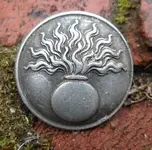
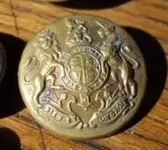
That would be Artillery Bob.Here is what is described as a typical "French" button found in a WWI trench.
Link: Four Bees: WW1 Button Grouping
SBB
View attachment 624825
This particular souvenir has a German button on it but I would imagine they used whatever button was available. Look at the links I posted. It seems to show various buttons were used.Last but not least, below is what is described as a "WWI British General Service" button.
So the bottom line for me is ...
VHS07's item is a WWI souvenir letter opener from Verdun, France and made from a French bullet with a German button on it.
Which kinda make sense to me based on the current evidence and the fact that the primary conflict was between France and Germany ... both of which I believe are depicted on the item and would have made a good souvenir that would appeal to both French and German tourist alike. After the war was over I'm sure the region got hoards of tourist not only from France but from Germany as well.
That's my story and I'm stickin' to it!
Sodabottlebob
View attachment 624846

Did you see those early tank officer buttons I posted?
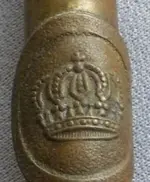

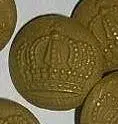
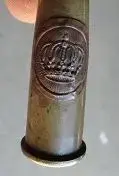

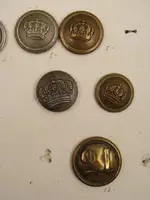
That looks like a match. Even though a WWI British crown is very similar, I think its safe to say its German. I wonder how it was attached?The button pictured here is from that last website and I'm selecting it as a possible candidate as being the same or very similar to the German button like the one attached to vhs07's shell casing.
SBB
View attachment 625000
View attachment 625001

Link: Trench Art: An Illustrated History, by Jane Kimball Pieces described as ‘Trench Art’ have the following distinctly different origins:
Letter openers or paper knives, often made in a scimitar style from pieces of flat brass soldered to cartridge casings, were a popular 'trench art' item, and an amazing number of these have survived. The more interesting ones of this type are engraved with the names of battles or individuals. Other letter openers utilized copper driving bands or shell fragments to create souvenir letter openers. When the opportunity to purchase military surplus after WWI arose, Francis Bannerman of Brooklyn, New York purchased a huge amount of this material. Some of Bannerman’s ‘recycled’ and mounted pieces occasionally appear today advertised as ‘trench art’. Among the most desirable of commercial pieces made from shell casings were those fabricated by the Arts and Crafts artist, Dirk van Erp, an immigrant from Holland who worked as a metal worker in the shipyards near San Francisco. As early as 1900 he began making vases from spent shell casings in a hammered geometric style with artificially patinated finishes. Link: Trench art - Wikipedia, the free encyclopedia When the war ended and civilians began to reclaim their shattered communities, a new market appeared in the form of pilgrims and tourists. Over the ensuing twenty years the mountains of discarded debris, shell casings and equipment were slowly recycled, with mass-produced town crest motifs being stuck onto bullets, shell casings, fuse caps—anything—and sold to tourists. Alongside items that, by their nature, had to be made in situ, it is fair to assume many smaller items—rings, paper knives, etc.--were made by soldiers either in front line or support trenches, especially in quieter parts of the line. Link: Trench Art « World War 1 Trench Art Groups of soldiers often formed small manufacturing cooperatives, similar to knitting circles found in their villages back home. Soldiers with sought after skills, such as etching or welding, were in high demand. While less artistically skilled solders collected and prepared the raw materials and assisted in the polishing the finished pieces of trench art. Although most soldiers took great pride in creating their own souvenirs, an economy of barter developed around the cottage industry of creating trench art. The less artistically inclined soldier’s often traded food or other scarce items for souvenirs to send home. Magazine Articles with Pictures Link: The Battle of Verdun 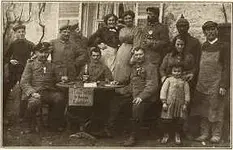 |
